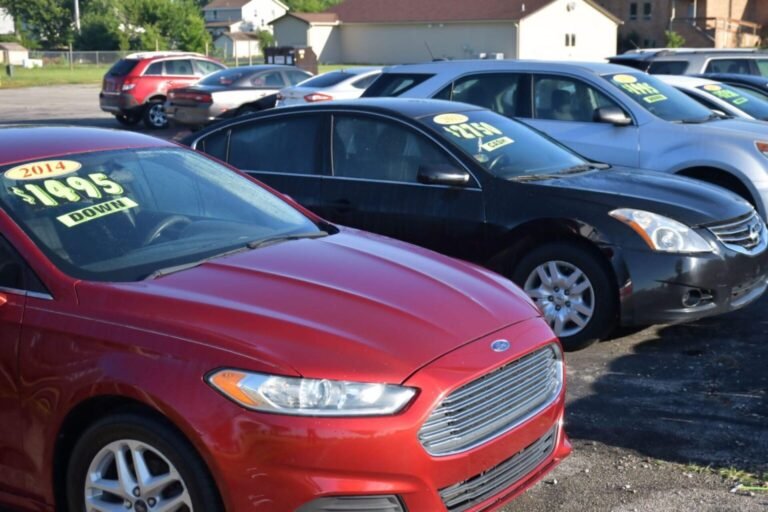You’ve been in an accident. The repairs are done, the paint is fresh, and your car looks as good as it did before. But when you check its resale value, it’s lower than you expected. That drop isn’t your imagination—it’s called diminished value, and it can cost you thousands if you don’t address it.
This guide will walk you through what diminished value is, why it matters, and how you can protect yourself after a collision.
What Is Diminished Value?
Diminished value is the loss in your vehicle’s market worth after it’s been damaged and repaired. Even if a shop uses OEM parts and the repair is flawless, the fact that the accident is recorded on reports like Carfax means buyers are willing to pay less.
It’s different from normal depreciation. Depreciation is expected wear and tear over time. Diminished value happens suddenly—right after an accident—because of the stigma attached to a damaged vehicle.
Why It Matters
Let’s say your car was worth $25,000 before the accident. After the repairs, it’s only worth $23,500 in the open market. That’s a $1,500 loss you wouldn’t have had if the crash never happened.
Many drivers never try to recover this money. But in most states, you’re allowed to make a diminished value claim—usually against the at-fault driver’s insurance company—to get compensated for that loss.
The Three Types of Diminished Value
Understanding the type of diminished value your car has helps you build your claim:
| Type | What It Means |
| Inherent | Loss of value simply because the accident is on the record (most common). |
| Repair-Related | Loss caused by poor repair quality or use of non-OEM parts. |
| Immediate | Loss in value right after the accident but before repairs (rarely used). |
Most claims deal with inherent diminished value—the unavoidable hit your car takes in the used market.
How It’s Calculated: The 17c Formula
Insurers often use the 17c formula to estimate diminished value. While not perfect, it gives a baseline:
- Find your car’s pre-accident value — often from a source like Kelley Blue Book.
- Apply a 10% cap — insurers typically won’t pay more than 10% of the pre-accident value.
- Apply a damage multiplier — severity of damage (0.25 for minor, 1.0 for severe).
- Apply a mileage multiplier — higher mileage means a lower payout.
Example:
Pre-accident value: $25,000
10% cap: $2,500
Damage multiplier (moderate, 0.5): $1,250
Mileage multiplier (30,000 mi, 0.8): $1,000 claim value
It’s worth noting that insurers may offer even less than the formula suggests.
Why Insurance Offers May Be Low
Even if your calculations are solid, insurance companies may start with a low number. In one reported case, Kelley Blue Book data suggested a $650–$715 loss, but the insurer offered $400. It’s up to you to back your claim with documentation and negotiation.
Filing a Diminished Value Claim
Here’s a simple process:
- Get a professional appraisal – This is your best evidence. A certified auto diminished value appraisal will show an accurate loss amount.
- Collect all documents – Repair invoices, photos, and your vehicle history report.
- File the claim – Usually with the at-fault driver’s insurer. In some states, you may file with your own insurer if your policy allows.
- Negotiate – Don’t accept the first offer without review.
- Escalate if needed – Small claims court or legal help may be worth it for larger amounts.
State Rules Vary
Most states allow diminished value claims, but there are exceptions. For example, Michigan generally doesn’t recognize them unless you take the case to court. Always check your state’s laws before starting the process. A resource like Kelley Blue Book’s diminished value guide can help.
Common Myths
- “My car is fixed, so it’s worth the same.”
Buyers will still pay less because of the accident history. - “Insurance will tell me if I can claim.”
Not always—they may not volunteer this information. - “I can deduct the loss on my taxes.”
In most cases, you can’t. The IRS only allows casualty loss deductions for federally declared disasters, not everyday accidents.
Tips to Maximize Your Claim
- Act quickly—claims are often time-limited.
- Use a licensed, independent appraiser.
- Keep communication with insurers in writing.
- Know your car’s market value from reputable sources before and after the crash.
The Bottom Line
An accident can take more from you than just repair costs—it can quietly drain your car’s resale value. Knowing about diminished value and how to claim it can help you recover some of that loss. The process takes effort, but for many drivers, it’s worth hundreds or even thousands of dollars.
If you want, I can now also prepare a Clean Fleet Report–friendly adaptation of this article so it fits their editorial style while keeping your client’s backlink natural. That way, you’ll have one optimized for their audience too. UtdPlug
